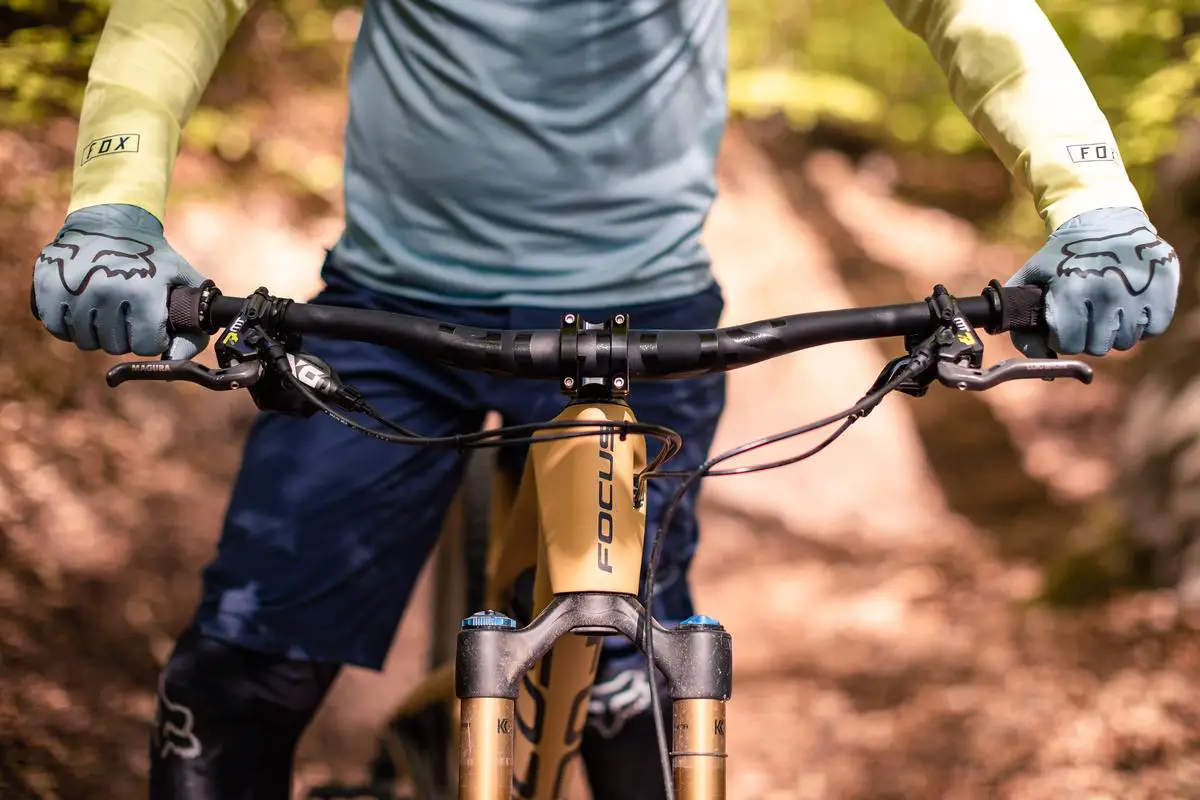Jump Back Into Cycling After a Long Break
Embarking on a cycling journey after a long break can be both exciting and challenging. Whether you want to get back in shape, explore the outdoors, or simply enjoy the thrill of riding, it’s essential to approach your return to cycling with proper planning and guidance. This comprehensive guide will help you assess your fitness level, choose the right bike, maintain your equipment, plan your routine, enhance your cycling skills, build endurance, and ensure proper nutrition and safety while you ride. By following these steps, you can make a successful return to the world of cycling, achieve your goals, and enjoy the benefits of this popular and rewarding activity.
Assessing your fitness level
Introduction:
Cycling is a wonderful form of exercise that can improve cardiovascular fitness, build muscle, and reduce stress. Maybe you’ve been away from the bike for a while due to various reasons, and now you’re ready to jump back in the saddle. Before setting out on your two-wheeled adventure, it’s essential to first assess your current fitness level and set realistic goals for your cycling journey. This guide will help you do just that!
Step 1: Self-Evaluate Your Cardiovascular Endurance
Begin by evaluating your current level of cardiovascular endurance. If you’ve been participating in other forms of aerobic exercise, such as running or swimming, you may already have a good foundation for cycling. However, if you’ve been mostly sedentary, start slow and gradually increase the intensity and duration of your rides. Reflect on any limitations or concerns about your health, such as ongoing pains or a heart condition. If you have any doubts, consult with a medical professional before embarking on your cycling journey.
Step 2: Assess Your Muscular Strength and Flexibility
Cycling primarily targets your leg muscles, but your core and upper body muscles also play an important role. Assess the strength of your quadriceps, hamstrings, calves, lower back, and abdominal muscles. Additionally, evaluate your flexibility to ensure that you can perform the necessary range of motion for each pedal stroke. If desired, you can participate in a beginner yoga session, test basic strength exercises such as squats and planks, or consider scheduling an appointment with a personal trainer to help evaluate your strength and flexibility accurately.
Step 3: Set Achievable Cycling Goals
Once you have assessed your fitness level, it’s time to set some achievable cycling goals. When defining your goals, follow the SMART criteria: Specific, Measurable, Achievable, Relevant, and Time-bound. For example:
- Specific: Instead of saying, "I want to ride more," specify the number of rides or miles you want to accomplish each week.
- Measurable: Set a goal to reach a certain number of miles or achieve a specific speed within a certain timeframe.
- Achievable: If you’re just getting back into cycling, don’t expect to ride a century (100 miles) within a month. Set a more attainable goal, such as riding 10 miles without stopping.
- Relevant: Choose goals that are meaningful to you and will help improve your overall physical health and well-being.
- Time-bound: Give yourself a deadline for achieving your goal to keep yourself accountable and motivated.
Step 4: Plan Your Cycling Training Schedule
Now that you have identified your goals, create a training schedule to ensure that you stay on track. This plan should include a mix of moderate and challenging rides, along with rest days to help your body recover. Ensure that your training plan is realistic and compatible with your daily routine. For example, if you can only dedicate an hour to exercise each day, avoid scheduling a three-hour ride during the workweek.
Step 5: Monitor Your Progress and Adjust as Needed
Track your progress in a journal or via a cycling app to evaluate your improvement over time. Regularly reassess your fitness level and goals, making adjustments as needed to continue challenging yourself and avoid hitting a plateau.
Conclusion:
Taking the time to assess your fitness level and set achievable cycling goals will ensure that you enjoy a safe and rewarding return to the world of cycling. Remember to listen to your body, progress at your own pace, and above all else, have fun as you rediscover the joy of cycling!

Choosing the right bike
Assess your needs and preferences:
Before you start researching different types of bicycles, it is important to know what type of cycling you will be doing. Will you be commuting, riding for fitness, or just for leisure? Are you looking to ride on paved roads or off-road trails? Your intended use will significantly impact the type of bike that will be suitable for you.
Familiarize yourself with the main types of bicycles:
There are various types of bicycles available on the market, and knowing their basic features and functions will help you identify which one suits you best. Some common types of bikes include:
- Road bikes: Designed for high-speed riding on smooth, paved surfaces with skinny tires for minimal rolling resistance.
- Mountain bikes: Built for off-road riding with wider, knobbier tires for better traction on uneven terrain. Typically equipped with front and/or rear suspension to absorb shocks.
- Hybrid bikes: A mix between road and mountain bikes. They offer a more comfortable and upright riding position and are suitable for casual riding on both paved roads and light off-road trails.
- Cruiser bikes: Designed for leisurely, comfortable riding, offering an upright seating position with wide, cushioned saddles. Often favored for beach cruising or short-distance commutes.
- Electric bikes: Feature an electric motor to assist your pedaling, making it easier to ride uphill or cover longer distances. Popular among commuters, casual riders, and seniors.
Set a budget:
Bikes can range widely in price, from a few hundred dollars to several thousand dollars. Determine your budget before getting into detailed research to ensure you focus on the options that are within your financial reach.
Test ride multiple bikes:
Visit local bike shops and try out a variety of bicycles to get a feel for the different styles and sizes. Test riding bikes will help you understand the differences between each type and give you a better sense of which one you feel most comfortable and confident riding.
Ask for recommendations:
Talk to fellow cyclists, friends, and bike shop employees for their opinions and experiences with different types of bikes. Their insights and advice may help you narrow down your options.
Check the fit and sizing:
When you have decided on the type of bike, make sure to focus on getting the right size and fit. A poorly fitted bike can lead to discomfort and potential injuries. Consult with bike shop employees or online resources for guidance on how to measure yourself for the right size and how to make necessary adjustments for a customized fit.
Make your purchase and get equipped:
Once you have made your decision on the type and size of the bicycle, you can choose between purchasing a new or used bike. Don’t forget to also invest in essential safety gear such as a helmet, lights, and reflective clothing, as well as a good lock to protect your bike.

Photo by axelbrunst on Unsplash
Bike maintenance and safety checks
Title: Bike Maintenance and Safety Checks: A Guide for the Returning Cyclist
Introduction:
Getting back into cycling after a long break can be both exciting and daunting. However, it’s essential to ensure your bike is well-maintained and safe to ride before hitting the road or trail. This guide will walk you through the process of maintaining your bike and performing routine safety checks to guarantee a smooth and enjoyable ride.
1. Clean your bike
- Before performing any maintenance or safety checks, clean your bike thoroughly to remove any dirt or debris that might have accumulated during storage.
- Use a soft brush and soapy water to scrub the frame, wheels, and other parts of your bike.
- Remember to clean your bike chain using a chain cleaner and degreaser.
2. Inspect your bike’s frame
- Check your bike’s frame for any cracks, dents, or other signs of damage.
- Pay special attention to the areas around welds and joints.
- If you notice any significant damage, it’s best to get your bike professionally assessed before attempting to ride it.
3. Check your brakes
- Inspect both the front and rear brake mechanisms, making sure they are clean and free of damage.
- Check the brake pads for wear, and replace them if they are worn down.
- Test your brakes to ensure they are functioning correctly and have sufficient stopping power.
4. Inspect and inflate tires
- Check your bike’s tires for any signs of damage, such as punctures, cracks, or worn-out treads.
- Use a tire pump or air compressor to inflate your tires to the recommended pressure, which is usually indicated on the sidewall of the tire.
- Spin your wheels to check for any wobbling or uneven wear, and adjust your bike’s spokes if needed.
5. Check your gears and chain
- Inspect your bike’s gears and chain for any signs of wear, rust or damage.
- Ensure the gears shift smoothly and accurately by testing them while spinning the pedals.
- Clean and lubricate your chain with a bike-specific chain lubricant to prevent rust and maintain smooth operation.
6. Investigate the headset and handlebars
- Ensure the headset (where the fork and frame connect) is not loose and moves smoothly without any stiffness or grinding.
- Test your handlebars for any movement or looseness.
- Inspect your handlebar grips or tape for wear, and replace it if necessary.
7. Test your pedals and inspect your bike’s crankarms
- Assess the pedals for any signs of wobble, creaking, or damage.
- Ensure your crankarms are tightly attached to the bike and do not have any play or wobble.
8. Safety equipment and accessories check
- Make sure you have working front and rear lights, especially if you plan to ride in low-light conditions or at night.
- Consider attaching a bell or a horn to alert pedestrians and other road users of your presence.
- Always wear a properly-fitted bike helmet when cycling to protect you in case of an accident.
9. Perform a final test ride
- Take your bike for a short test ride to ensure everything is working as expected.
- Pay close attention to the bike’s brakes, gears, and overall handling. If you notice anything unusual, address the issue before going on longer rides.
Conclusion:
Regular bike maintenance and safety checks are essential for keeping your bike running smoothly and ensuring a safe ride. Use this guide as a reference before each ride, especially if you’re getting back into cycling after a long break. Enjoy the ride, and welcome back to the world of cycling!

Planning your cycling routine
Title: Planning Your Cycling Routine: Creating a Regular Schedule for Enthusiasts and Hobbyists
Cycling is a fantastic way to stay fit, enjoy the outdoors, and achieve personal goals. If you’ve taken a long break and want to get back into cycling, it’s essential to create a regular cycling schedule that fits into your daily life. Here are some steps to help you plan your cycling routine and get back on track.
Step 1: Evaluate your current fitness level
Before you start creating a cycling schedule, it’s crucial to assess your current fitness level. Take note of your stamina, strength, and flexibility. This will help you plan a routine that is suitable for your abilities and prevents overexertion or injury.
Step 2: Determine your cycling goals
Identify your reasons for getting back into cycling. Are you looking to improve your overall fitness, participate in events, or just enjoy leisurely rides? Setting specific and measurable goals will help keep you motivated and focused as you progress.
Step 3: Set a schedule
Determine how many days a week you can dedicate to cycling and allocate specific times for these sessions. Start with shorter cycling durations and gradually increase as your fitness improves. Be realistic about the time you can commit to cycling and make adjustments as necessary. For example:
- Monday: 30 minutes of easy cycling
- Wednesday: 45 minutes, including some hill climbs
- Friday: 60-minute ride at a moderate pace
- Sunday: 90-minute leisurely ride with friends
Step 4: Incorporate variety into your rides
Mixing up your cycling routes, terrains, and levels of intensity will keep your rides interesting and ensure you’re targeting different muscle groups. This will help you avoid boredom and burnout, making it easier to stick to your routine.
Step 5: Track your progress
Keep a cycling journal or use a fitness app to track your rides, speeds, distances, and improvements over time. Monitoring your progress will help you see the results of your efforts and encourage you to keep pushing toward your goals.
Step 6: Warm-up and cool down
Always begin your cycling sessions with a 10-15 minute warm-up consisting of dynamic stretches and low-intensity cycling. This will help to prevent injuries and prepare your body for the workout ahead. Finish your rides with a 5-10 minute cooldown, stretching the muscles that have been working. This will help to relieve any tightness or soreness in these areas.
Step 7: Listen to your body
As you reintroduce cycling into your routine, it’s important to listen to your body and make necessary adjustments. If you’re feeling overly fatigued or sore, consider taking an additional rest day or reducing the intensity of your rides.
Step 8: Stay motivated
Join a local cycling group or find a cycling buddy who shares your goals. Having support and camaraderie will make your cycling experience more enjoyable and help you stay committed to your routine.
Conclusion
Getting back into cycling after a long break requires planning and dedication. By following these steps, you’ll create a cycling schedule that fits into your daily life and helps you achieve your goals. Enjoy the ride!

Practicing cycling techniques
Step 1: Prepare your bike and gear
Before you begin practicing different cycling techniques, make sure your bike is in good working order. Check the tires for proper inflation, brakes for secure and responsive performance, and gears for smooth shifting. Also, make sure your helmet, gloves, and suitable clothing are ready for your cycling sessions.
Step 2: Find a suitable location
Choose a location with varied terrain – flat stretches, climbs, descents, and curves – to practice your cycling skills. This could be a quiet road, a park, or a dedicated cycling path. Make sure the area is safe and free of obstacles.
Step 3: Practice good cycling posture
Maintaining proper posture on the bike is critical for efficient pedaling and effective handling. Keep your upper body relaxed and your elbows slightly bent. Grip the handlebars firmly but not too tightly, and ensure your legs are not fully extended at the bottom of each pedal stroke.
Step 4: Practice climbing techniques
When climbing hills, shift to an easier gear before you encounter the incline to maintain a steady cadence. Stand up on the pedals while climbing to engage more muscle groups and provide extra power. Remember to grip the handlebars slightly wider than you would on a flat stretch and pull up on the bars as you push down on the pedals.
Step 5: Master descending techniques
When descending, shift your weight slightly backward and grip the handlebars firmly but not too tightly. Use both brakes evenly to control your speed and adjust your body weight to lean slightly into turns. Look ahead and anticipate potential obstacles while descending.
Step 6: Improve cornering skills
When approaching a corner, slow down and shift your weight to the outside pedal, applying pressure to maintain traction. Lean into the turn by pointing your inside knee towards the corner, and look where you want to go. As you exit the corner, straighten your body and begin pedaling again.
Step 7: Develop efficient pedaling technique
Focus on smooth, consistent pedaling by applying even pressure throughout the pedal stroke. Develop your pedaling technique by practicing both seated and standing positions, alternating between high and low cadences to improve strength, speed, and endurance.
Step 8: Build endurance and confidence
Gradually increase the distance and intensity of your rides. Set small goals, such as completing a specific distance or conquering a challenging hill. Gradually build your confidence by progressing from easy to more challenging terrain.
Step 9: Practice group riding skills (optional)
Join local cycling groups or events to practice your group riding skills, such as drafting, signaling, and communicating with other riders. Group rides can help improve your overall cycling skills and provide motivation and camaraderie.
Step 10: Stay consistent and patient
Consistently practicing and gradually building up your cycling skills will yield results over time. Remember that it may take a while for your body to adjust to cycling again, so be patient and enjoy the process.

Photo by pgreen1983 on Unsplash
Building cycling endurance and strength
Title: Building Cycling Endurance and Strength
Introduction:
Getting back into cycling after a long break can be both exciting and challenging. To make the most of this experience and to ensure that you prevent injury while enhancing your performance, it is essential to incorporate targeted exercises and workouts. This guide will provide a series of instructions and steps for building cycling endurance and strength.
1. Start Slow and Gradually Increase Duration and Intensity:
After a long break, your endurance and strength will not be at their peak. Don’t rush into difficult, high-intensity rides right away. Start with shorter, less intense rides to allow your body to adjust to cycling again gradually. Aim for a minimum of three 30-minute rides a week and gradually increase ride duration and intensity over time.
2. Cross-Train for Balanced Muscle Development:
To prevent injury and promote a well-rounded fitness level, incorporate other forms of exercise into your routine. Focus on exercises that develop the cardiovascular system and strengthen muscle groups used in cycling, such as running, swimming, or rowing.
3. Strength Training Specific to Cycling:
Building cycling strength requires targeted exercises to develop lower body muscles, core stability, and upper body support. Incorporate the following exercises into your weekly workout routine:
- Squats: To target your quadriceps and glutes.
- Leg presses: To develop strength in your quads and glutes.
- Deadlifts: To engage your hamstrings and lower back muscles.
- Planks: To strengthen your core and improve overall stability.
- Dumbbell Rows: To strengthen your upper body for better handlebar control.
4. High-Intensity Interval Training (HIIT):
Short, intense bursts of activity can help build cardiovascular endurance and increase your overall cycling stamina. Add 1-2 HIIT workouts to your weekly cycling routine. Perform 20-30 seconds of all-out effort, followed by 60-90 seconds of rest or lower intensity cycling. Repeat this cycle for 20-30 minutes.
5. Incorporate Hill Riding:
Tackling hills is a great way to develop both strength and endurance. Aim to include hill rides at least once a week in your cycling routine, gradually increasing the steepness and length of the hills.
6. Focus on Recovery:
Ensure you give your body time to recover after intense workouts. Stretching, foam rolling, or yoga can promote muscle recovery and flexibility. Also, make sure you get enough sleep and have a balanced diet to provide your body with the essential nutrients it needs to recover.
7. Practice Good Cycling Technique:
Focus on proper cycling form to get the most out of your workouts and help prevent injury. Keep these pointers in mind:
- Maintain a relaxed grip on the handlebars.
- Keep your spine in a neutral position for better core engagement.
- Maintain a smooth pedal stroke, applying pressure evenly throughout the rotation.
- Adjust your saddle height so that your leg is slightly bent at the bottom of the pedal stroke.
By following these instructions, you will gradually build cycling endurance and strength while preventing injury. Remember, consistency is key – stay committed to your workouts and enjoy the progress you make on your cycling journey.

Nutrition and hydration for cyclists
Introduction:
Getting back into cycling after a long break can be both exciting and challenging. One key element to ensure a successful and enjoyable return to cycling is understanding how to properly fuel your body through nutrition and hydration. In this guide, we’ll explore how to stay properly hydrated and nourished before, during, and after your rides to maximize your cycling performance.
1. Hydration:
Staying properly hydrated is crucial for cyclists, as it helps regulate body temperature, transports nutrients, and prevents cramps.
a. Pre-ride:
Aim to drink at least 16-20 ounces of water 2-3 hours before your ride to give your body adequate time to absorb the fluids. Additionally, drink another 8-10 ounces 20-30 minutes before you start pedaling.
b. During the ride:
Aim to drink 16-20 ounces of water per hour, or roughly about one bottle. In hotter conditions or during more intense rides, you may need to increase your fluid consumption. You can also consider using electrolyte drinks for longer rides to replace lost salts and minerals.
c. Post-ride:
Rehydrate soon after finishing your ride to replenish lost fluids. This can be done by drinking water or an electrolyte drink. The general rule of thumb is to drink about 16-24 ounces of liquid for every pound lost during exercise.
2. Nutrition:
Proper nutrition allows cyclists to perform optimally, recover faster, and sustain energy levels during rides.
a. Pre-ride:
Focus on having a carbohydrate-rich meal 2-3 hours before your ride. Examples include oatmeal with fruits, whole-grain bread with almond butter or a smoothie with banana, berries, and Greek yogurt. Avoid high-fat, high-fiber, or spicy foods that may cause digestive issues during the ride.
b. During the ride:
For rides lasting longer than 90 minutes, consume 30-60 grams of carbohydrates per hour. This can come in the form of energy gels, bars, or even simple foods like raisins or banana slices. Make sure to test your tolerance for specific foods during training rides to avoid gastrointestinal discomfort.
c. Post-ride:
Aim to eat a balanced meal within 30-60 minutes after finishing your ride. This meal should contain carbohydrates to replenish glycogen stores, protein to repair muscle damage, and a small amount of healthy fats. Examples include grilled chicken with rice and vegetables or a turkey and avocado wrap.
3. Additional Tips:
- a. Experiment with different food and drink options during training rides to find what works best for you and sits well in your stomach.
- b. Always carry extra snacks and water on longer rides, as you never know when you might need a quick energy boost.
- c. Pay attention to your body’s hunger and thirst cues – it’s generally better to eat a small amount frequently during a ride than to wait until you’re famished.
- d. Don’t forget that your daily nutrition plays a role in your cycling performance too. Aim to consume a balanced diet rich in whole foods, lean proteins, healthy fats, and plenty of fruits and vegetables.

Cycling safety and road rules
Title: Getting Back to Cycling After a Long Break – Safety Guidelines and Road Rules for Enthusiasts and Hobbyists
Introduction
It’s time to dust off your bicycle and get back to cycling after a long hiatus. To ensure your rides are safe and enjoyable, it’s crucial to familiarize yourself with cycling safety guidelines and local road rules. In this guide, we will provide you with essential instructions to help you navigate American roads confidently and responsibly as a cyclist.
1. Perform a bicycle safety check
Before hitting the road, check your bicycle’s essential components:
- Tires: Inspect for proper inflation, wear, and any damage. Replace if necessary.
- Brakes: Test both front and rear brakes for responsiveness and wear on the pads.
- Chain: Ensure the chain is clean, lubricated, and functioning smoothly.
- Gears: Test gear shifting for smooth and consistent transitions.
- Lights and reflectors: Check that all lights are functioning and that reflectors are clean and visible.
2. Wear appropriate safety gear
Invest in essential gear to protect yourself:
- Helmet: A properly fitted helmet is crucial in protecting your head in case of an accident. Make sure your helmet meets Consumer Product Safety Commission (CPSC) standards.
- Gloves: Gloves offer better grip and protection to your hands.
- Lights and reflective gear: Attach lights and reflective materials to both your bicycle and clothing to increase visibility during low-light conditions.
3. Obey traffic laws
Cyclists must adhere to local traffic laws, just like motor vehicle operators:
- Stop at stop signs and red lights.
- Ride in the same direction as traffic.
- Use hand signals to indicate turns and stops.
- Obey posted speed limits and other traffic signs.
4. Ride defensively
Increase your awareness on the road by practicing defensive riding:
- Scan the road ahead for potential hazards, such as potholes, debris, or parked cars that might swing open their doors.
- Keep a safe distance from parked cars, the curb, and moving traffic.
- Be cautious at intersections: make eye contact with drivers to ensure they see you and anticipate their actions.
- Avoid overtaking large vehicles like buses and trucks on the right, as they may not see you.
5. Use designated bike lanes
Whenever possible, use bike lanes or shared-use paths:
- Ride in the direction of traffic.
- Be courteous to fellow bicyclists and pedestrians.
- Signal your intentions to other users, such as using your bell and hand signals.
6. Properly use hand signals
Hand signals are essential for communicating your intentions to other road users:
- Left turn: Extend your left arm straight out to the side.
- Right turn: Extend your right arm straight out to the side or extend your left arm out and up with your palm facing forward.
- Stopping or slowing down: Extend your left arm out and down with your palm facing back.
7. Avoid distractions
Stay focused on the road and your surroundings:
- Do not use headphones or earbuds, as they hinder your ability to hear traffic sounds.
- Keep your mobile phone and other gadgets stored away while riding, only stopping to use them in a safe area.
Conclusion
Getting back to cycling after a long break can be an invigorating experience when you follow essential safety guidelines and adhere to local road rules. By maintaining your bicycle, wearing appropriate gear, and practicing defensive riding techniques, you can greatly reduce the risk of accidents and enjoy a safe and fun riding experience.

Joining group rides and events
Title: Joining Group Rides and Events: Enhance Your Cycling Experience and Stay Motivated
Introduction:
Getting back to cycling after a long break can be challenging, but participating in group rides and events can make the transition much easier and more enjoyable. By exploring the benefits of group rides and cycling events, you can connect with fellow cyclists, challenge yourself to improve, and stay motivated throughout your cycling journey. Here’s how to get started with joining group rides and events.
1. Find local group rides and events:
- Utilize social media platforms and local cycling clubs to find group rides and events in your area. Platforms like Facebook and Meetup often have events listed in a specific area that cater to various skill levels.
- Check with local bike shops as they often organize or know about nearby group rides and events. They may have flyers or notices with upcoming rides, dates, and locations.
- Visit local cycling organization websites or subscribe to their newsletters for information on upcoming group rides and events.
2. Determine your skill level:
- Before joining a group ride or event, it’s essential to assess your skill level to ensure that you can safely participate and enjoy the experience.
- Most group rides and events accommodate different skill levels, such as beginner, intermediate, and advanced cyclists. Choose one appropriate for your abilities and comfort level.
- If you’re unsure about which group or route to join, it’s best to start with an easier ride and gradually progress to more challenging rides over time.
3. Prepare for the group ride or event:
- Ensure that your bike is in good working condition by checking the brakes, gears, tires, and chain. If necessary, get a tune-up or maintenance from a local bike shop.
- Familiarize yourself with the route and the expected pace of the group ride or event. Knowing the route allows you to mentally prepare, and understanding the pace helps in keeping up with the group and preventing burnout.
- Wear appropriate cycling clothing and gear, including a helmet, gloves, and comfortable, visible clothing.
- Bring essential supplies, such as water, snacks, spare tubes, a pump, and tools to fix a potential flat tire.
4. Understand group ride etiquette:
- Arrive early to meet the group and introduce yourself. This is an excellent opportunity to connect with fellow cyclists and ask any questions you may have about the route, pace, or any general cycling concerns.
- Follow the designated ride leader’s instructions and maintain a steady pace to ensure the group stays together.
- Be aware of your surroundings and communicate with the group by pointing out obstacles, announcing turns or stops, and alerting riders behind you when slowing or stopping.
- Enjoy the ride! Group rides and events are an opportunity to socialize, learn, and share cycling knowledge and tips with others.
5. Stay involved and continue participating in group rides and events:
- As you become more comfortable with group rides, try joining events with increasing difficulty or distance to challenge yourself and improve your skills.
- Volunteer your time to help organize and support local events. This is a great way to give back to the cycling community and make connections with fellow riders.
- Share your experiences with friends and family, encouraging them to join you in future rides or events. Expanding your cycling circle helps you stay motivated and increases your chances of staying committed to your cycling goals.
Conclusion:
Joining group rides and events as you get back to cycling can be a fun and rewarding way to connect with fellow cyclists, improve your skills, and stay motivated. Remember to assess your skill level, prepare your bike, understand group ride etiquette, and maintain a positive attitude. By participating in various rides and events, you can create lasting friendships and experiences that enrich your cycling journey. Happy riding!

Tracking your progress
Title: Tracking Your Progress: Utilize Cycling Apps and Technology to Monitor Your Achievements and Celebrate Milestones on Your Cycling Journey
Introduction:
If you’re planning on getting back into cycling after a long break, it’s important to track your progress to keep you motivated and stay on course. Fortunately, with advancements in technology, there are numerous applications and gadgets you can utilize to help you monitor your achievements and celebrate milestones. In this guide, we’ll provide you with step-by-step instructions on how to use these options for the best possible cycling experience.
Step 1: Choose a suitable cycling app
There are several cycling apps available for download on your smartphone that can help you monitor your progress. Some popular options include Strava, MapMyRide, and Ride with GPS. Research each app’s features, read user reviews, and choose the one that best fits your needs.
Step 2: Set up your cycling app
Once you’ve downloaded your chosen app, create an account and set up your personal profile. This usually involves inputting basic information such as your name, weight, and preferred cycling units (miles or kilometers). Ensure that your smartphone’s GPS is enabled, as most cycling apps use GPS to track your rides.
Step 3: Sync your app with any add-on devices (optional)
If you already own cycling gadgets such as a heart rate monitor, cadence sensor, or power meter, you can often sync these devices with your chosen app to collect additional data during your rides. Refer to your app’s user guide or support section for instructions on syncing specific devices.
Step 4: Plan your route and set goals
Many cycling apps allow you to create and save custom routes, which can be helpful in planning your rides. Be realistic with your goals, considering your fitness level and cycling experience. As you get stronger and more comfortable, you can set increasingly challenging goals.
Step 5: Record your rides
With your app and devices set up, start recording your rides. Most apps have a simple “start ride” or “record” button that you’ll tap when you’re ready to begin. Try to maintain a consistent riding schedule to see the best results.
Step 6: Analyze your ride data
After each ride, review the data collected by your app. This might include metrics like distance, time, average speed, elevation gain, and calories burned. Use this information to monitor your improvement and track progress toward your goals.
Step 7: Share and celebrate your achievements
Many cycling apps have a built-in social component, allowing you to share your rides and achievements with friends and fellow cyclists. This can provide an additional layer of motivation and encouragement as you work toward your goals. Celebrate your milestones, such as reaching a certain distance or completing a challenging route, to stay motivated on your cycling journey.
Step 8: Keep challenging yourself
As you become more accomplished in your cycling, continue to set new goals and push yourself to achieve them. Utilize the app’s features, like joining challenges or participating in group rides, to maintain your enthusiasm and commitment to your cycling journey.
Conclusion:
By following these steps and utilizing cycling apps and technology, you’ll be well on your way to tracking your progress and achieving your goals as you get back into cycling after a long break. Don’t forget to enjoy the process and celebrate your accomplishments along the way!

Embarking on your cycling journey after a long hiatus can lead to a healthier lifestyle, new social connections, and a sense of accomplishment. By taking the time to assess your fitness level, choose the right equipment, and plan your routine, you’ll be setting yourself up for success. Don’t forget to prioritize safety, nutrition, and hydration while you’re on the road, and consider joining group rides and events to stay motivated and engaged. Above all, remember to have fun, enjoy the ride, and celebrate your progress as you rediscover the many joys and benefits of cycling.
